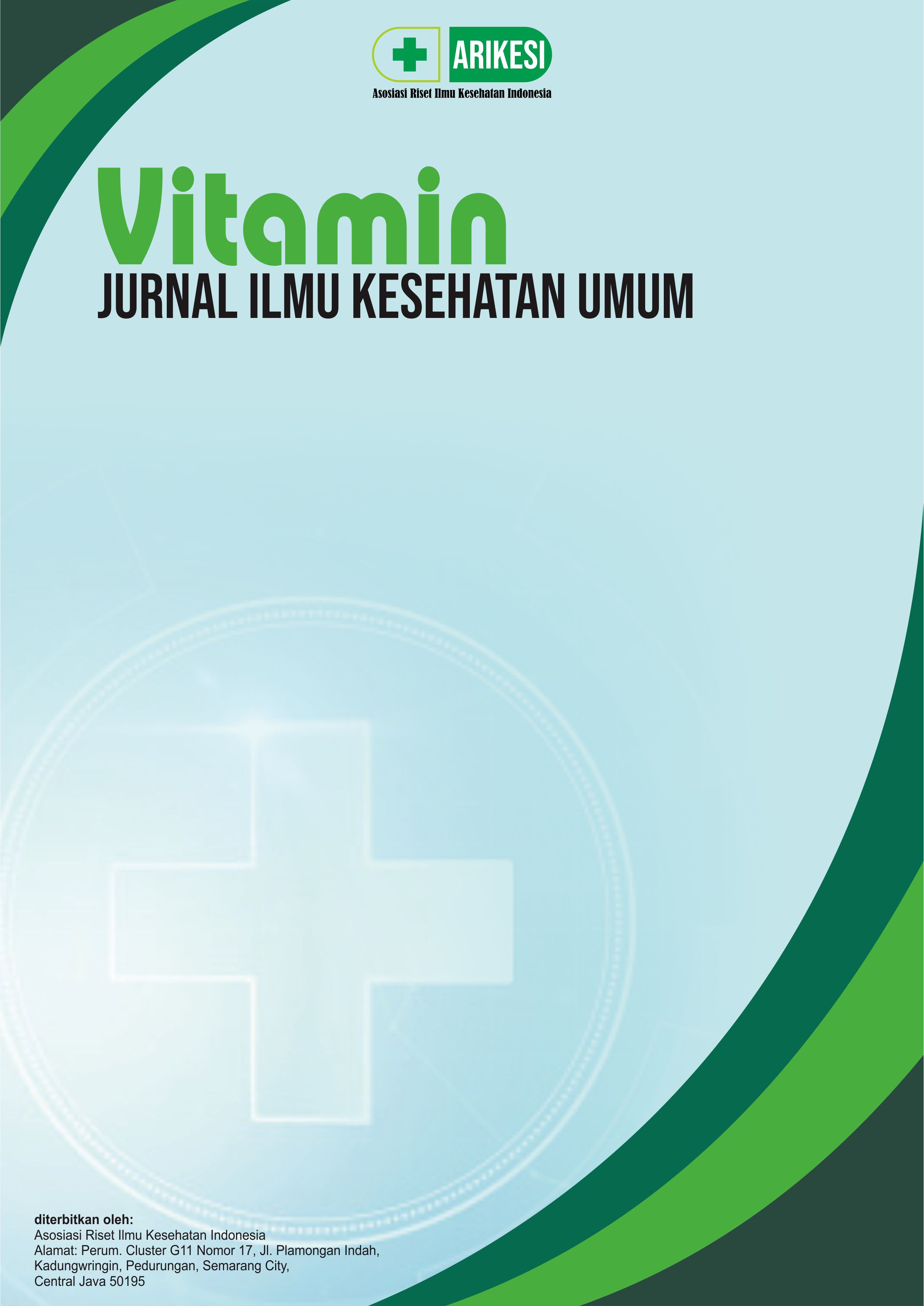Hubungan Kecemasan dengan Waktu Pulih Sadar Pasien Post General Anestesi
DOI:
https://doi.org/10.61132/vitamin.v1i2.994Keywords:
anxiety, general anesthesia, recovery timeAbstract
Background : In patient who will undergo surgery are found with many anxiety disorders. Anxiety can affect a patient's perception of surgery and have a negative effect on recovery from anesthesia. One of the complication patients undergo surgery are found with many anxiety disorders. Full recovery time is the time required by a patient to recover from the effects of a anesthesia, calculated from the time anesthesia was terminated. Purpose: Knowing the relationship between anxiety levels and recovery time of the patient with general anesthesia at Kudus Aisyiah Hospital Method: The type of research used is analtic observational with a sectional cross design. The samples used in this study are as many as 26 respondents with sample sampling samples being taken. Data analysis made with a static Chi Square test. Results: Respondents with a fast recovery time were 19 respondents (73.1%) and 7 respondents (26.9%) experienced a slow recovery time. The results of the chi square test obtained a value of p<0.001 (p <0.05). Conclusion: There is a Relationship of Anxiety with a Patient with General Anesthesia
Downloads
References
Aufar, A. F., & Raharjo, S. T. (2020). Kegiatan relaksasi sebagai coping stress di masa pandemi Covid-19. Jurnal Kolaborasi Resolusi Konflik, 2(2), 157–163. https://doi.org/10.24198/jkrkv2i2.29126
Brunner, & Suddarth. (2014). Keperawatan medikal-bedah (Edisi ke-12; Eka Anisa Mardela, Ed.). Jakarta: Penerbit Buku Kedokteran EGC.
Ghufron, M., & Risnawati, N. R. (2014). Teori-teori psikologi. Yogyakarta: Ar-Ruzz Media.
Kholil, L. R. (2010). Kesehatan mental. Purwokerto: Fajar Media Press.
Lestari, & Yuswiyanti. Pengaruh relaksasi otot progresif terhadap penurunan tingkat kecemasan pada pasien preoperasi di Ruang Wijaya Kusuma.
Mamuasa, P. P., Mendri, N. K., Ermawan, B., Kesehatan, P., & Yogyakarta, K. (2018). Hubungan derajat hipertensi dengan pemanjangan. Jurnal Kesehatan, 7(2), 73–78.
Mangku, & Senapathi. (2018). Buku ajar ilmu anestesia dan reanimasi. Jakarta: PT Indeks.
Misal, U., Joshi, S., & Shaikh, M. (2016). Delayed recovery from anesthesia: A postgraduate educational review. Anesthesia: Essays and Researches, 10(2), 164. https://doi.org/10.4103/0259-1162.165506
Muyasaroh, H. (2020). Kajian jenis kecemasan masyarakat Cilacap dalam menghadapi pandemi Covid-19. In LP2M (Lembaga Penelitian dan Pengabdian Masyarakat). http://repository.unugha.ac.id/id/eprint/858
Owen, H. K. (2016). Hubungan usia dan jenis kelamin pasien diabetes melitus tipe 2 terhadap tingkat kecemasan pasien di RDS dr. Soebandi Jember. Jurnal Kedokteran Universitas Jember.
Perdana, A., & Dkk. (2015). Uji validitas konstruksi dan reliabilitas instrumen The Amsterdam Preoperatif Anxiety and Information Scale (APAIS) versi Indonesia. Anesthesia & Critical Care, 31(1).
PH, L., Daulima, N. H. C., & Mustikasari, M. (2018). Relaksasi otot progresif menurunkan stres keluarga yang merawat pasien gangguan jiwa. Jurnal Keperawatan Indonesia, 21(1), 51–59. https://doi.org/10.7454/jki.v21i1.362
Pramono, A. (2015). Buku kuliah anestesi. Jakarta: EGC.
Roasdalh, C. B., & Kawalski, M. T. (2015). Buku ajar keperawatan dasar (Edisi ke-10, Vol. 3). Jakarta: EGC.
Stuart, G. W. (2012). Buku saku keperawatan jiwa (Edisi ke-5; alih bahasa oleh Kapoh R. P., Komara). Jakarta: EGC.
Stuart, G. W. (2016). Keperawatan kesehatan jiwa. Jakarta: Elsevier.
Sugiyono. (2017). Metodologi penelitian kuantitatif, kualitatif, dan R&D. Bandung: Alfabeta.
Swarjana, I. K. (2015). Metode penelitian kesehatan (Edisi revisi). Yogyakarta: Andi, Anggota IKAPI.
Downloads
Published
How to Cite
Issue
Section
License
Copyright (c) 2023 Vitamin : Jurnal ilmu Kesehatan Umum

This work is licensed under a Creative Commons Attribution-ShareAlike 4.0 International License.





